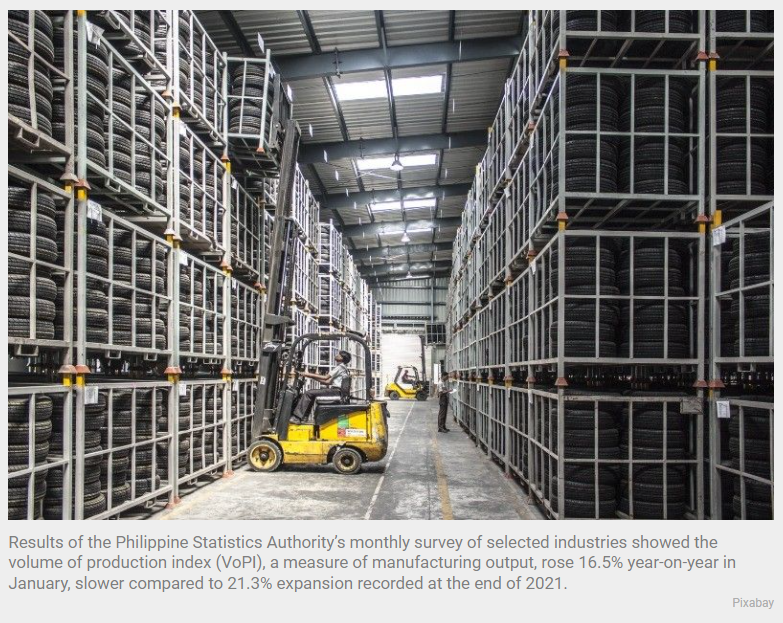Philippines: Local factory output slows in January as Omicron variant tore through economy
MANILA, Philippines — Amid the Omicron variant surge in January, local factory output slowed its ascent. But an analyst said production likely bounced back in February.
What’s new
Results of the Philippine Statistics Authority’s monthly survey of selected industries showed the volume of production index (VoPI), a measure of manufacturing output, rose 16.5% year-on-year in January, slower compared to 21.3% expansion recorded at the end of 2021.
This was the eight straight month that VoPI grew, despite Metro Manila and other areas reverting to stricter quarantine measures as the Omicron variant tore through the country in the first month of the year.
Why this matters
Economic managers look to manufacturing output as a barometer of economic welfare as it can be an indicator of demand situation in the country, where consumer spending is a major growth driver. When more finished products are coming out of factories, that could mean strong demand from consumers.
Last year, VoPI posted triple-digit growth rates which economists attributed to “base effects”. This means that because the pandemic sank the economy to historic-lows last year and crippled factory production, small gains from easing lockdowns would translate to stronger readings in the months to come.
What analysts say
Nicholas Mapa, senior economist at ING Bank in Manila, noted that the slowdown in January moved in concert with the January IHS Markit PMI report.
“The dip in activity likely traced to surging Covid cases as well as decreased mobility due to government-imposed curbs. We can expect activity to improve in February, similar to the bounce in PMI. Gains however may be capped by March due to the fallout from the conflict in Eastern Europe,” he said in a Viber message.
“Higher energy costs as well as overall anxiety driven by fears of stagflation likely to weigh on sentiment and overall demand,” Mapa added.
Other figures
- Sixteen industries grew in January, led by the manufacture of tobacco products and manufacture of wood, bamboo, cane, rattan articles and related products which went up at a pace of 88.4% and 86.8% year-on-year.
- Six industries, led by the manufacture of wearing apparel, saw output skid in the same month.
- Less than one-fourth of factories were operating at full capacity as average capacity utilization increased to 67.9% from 67.4% in December 2021.
Source: https://www.philstar.com/business/2022/03/09/2166040/local-factory-output-slows-january-omicron-variant-tore-through-economy


 English
English




